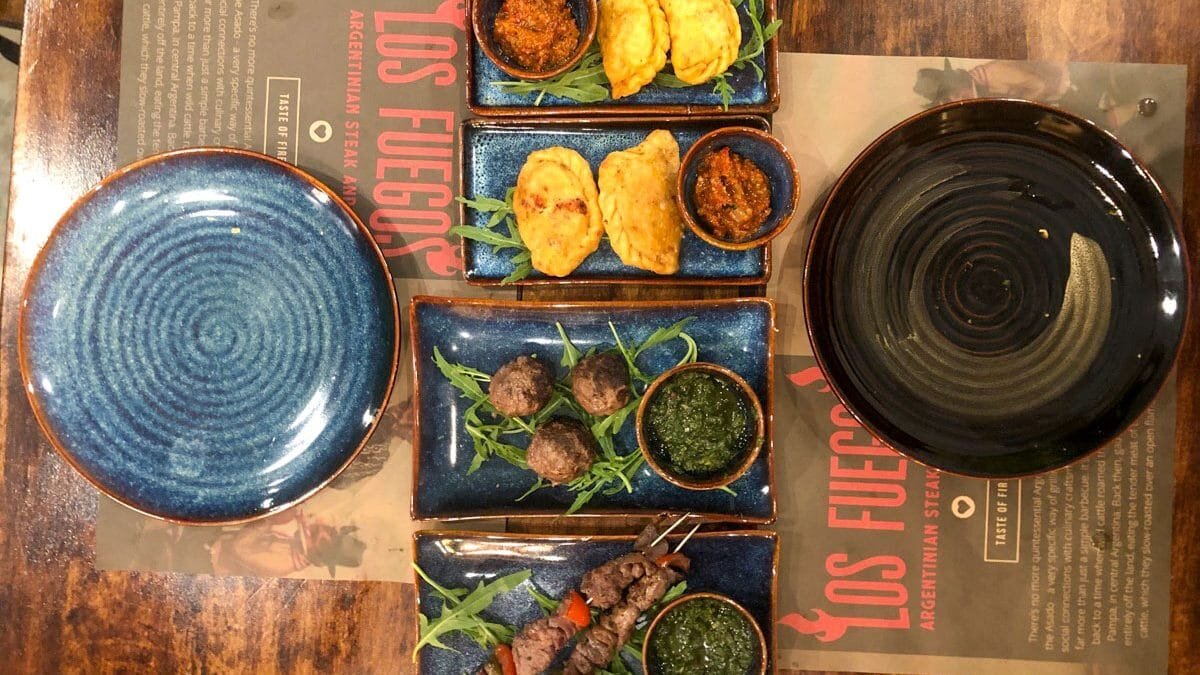
Culture
Food
Argentine food has a Mediterranean flavour having been influenced by Italian and Spanish immigrants. It is known for its tender meats, hearty stews, spicy sausages and delicious desserts such as Dulce de Leche.
The national dish of Argentina is asados (barbecued meat) grilled on a large grill. It is loaded with steaks; ribs; chorizo; mollejas (sweetbread), chinchulines (chitterlings) and morcilla (blood sausage)
What are the main influences?
Argentina has the second highest number of immigrants in the world. Their cuisine has been influenced by these immigrants their favourite foods and styles of cooking. Millions of immigrants came to live in Argentina from all around the world including Spain, Europe, the Middle East, Russia & Japan. Most of the immigrants were from Italy and Spain and introduced pizza and pasta to Argentina. British, German and Jewish also influenced Argentina introducing foods such as Sauerkraut (Germans) and Tea (British). All of these cultures influenced the dishes of Argentina.
How cuisine varies across the regions.
Served across Argentina.
Asado, although different provinces have different opinions on the cuts of meat and preparation.
Pizza
Milanesas
Pasta
Empanadas – the fillings vary a lot across the country
North West (desert-like).
Goat
Similar in style to Bolivia and Peru – Saltenas, Tamales, Humita,
Heavy stews are the most popular dinner dishes, Locro (thick dish with meat)
potatoes
Northerners like spice, where-as people in Buenos Aires tend not to
North East (tropical).
Mandioca (cassava) is a popular ingredient used to make bread and Chipa
also the only place in Argentina where fish is really popular
Goat
Saurkraut (large German population)
South.
Lamb, rare across the rest of the country but not in the south
Centola, the spider crab
How does food affect the way people live in Argentina?
The Argentines are known for their love of eating and their social lives revolve around sharing food. Invitations to have dinner at a person’s home is a symbol of friendship, warmth, and inclusion. Sunday family lunch is considered the most significant meal of the week, and usually includes pasta or Asado.
Another feature of Argentine cuisine is the preparation of homemade food to celebrate a special occasion, honor someone or meet new people. Homemade food typically includes french fries, patties and pasta. Homemade food is also seen as a way to show affection.
Argentine restaurants provide a big variety of cuisines, prices, and flavours. Large cities serve everything from high-end international cuisine, to bodegones (inexpensive traditional hidden taverns), less stylish restaurants, and bars and canteens offering a range of dishes at affordable prices.
Fun Fact!
Argentina has the highest consumption of red meat in the world.
How does Argentine food culture compare globally?
Similarities to Australia
Range of cuisine is similar to Australia, both have multicultural society
Both countries are adventurous when exploring different foods
Both countries enjoy eating a lot of italian food and barbecues
Similarities to other parts of the world
Similar dishes to Italy and Spain as these were the main influencing countries - pasta, pizza etc
What is different and what can we learn from each other?
Argentine’s main meal of the day is lunch, which is interesting. I think we could benefit from having lunch as the main meal of the day, as it is meant to be better for us to eat a light dinner.
Australia eats a lot more South East Asian cuisine and Indian food. I think we could introduce more Argentines to these types of flavours and spices.

